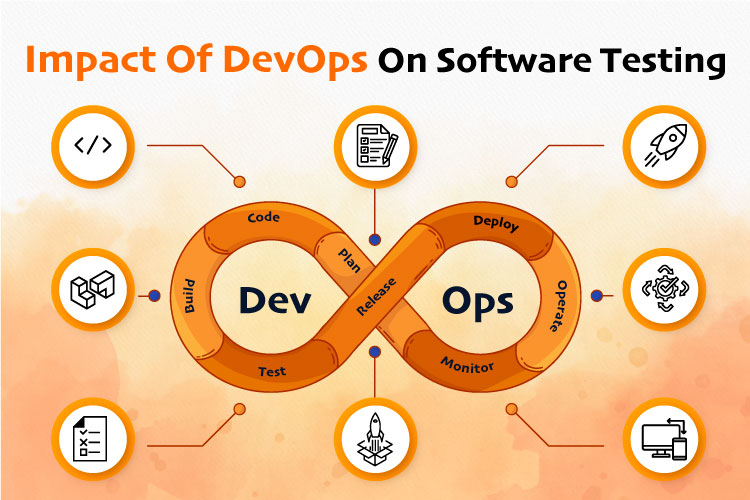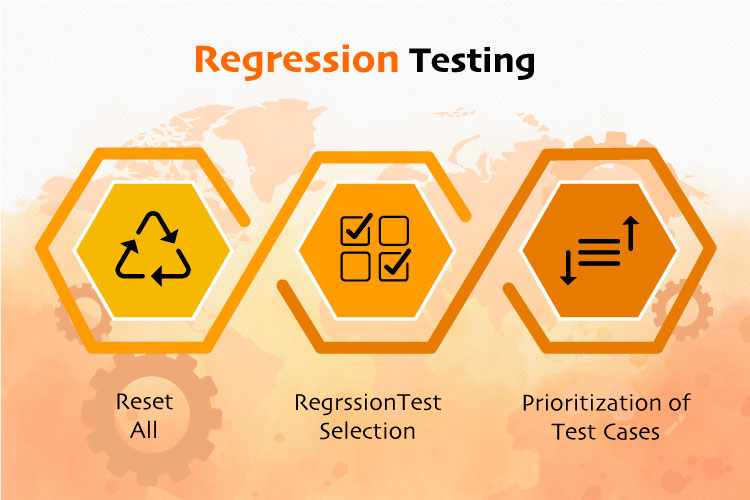Software testing is the most significant part of the Software Development Lifecycle as it is something upon which the final delivery of the product is dependent. It is time consuming and an intensive process, therefore, enhanced techniques and innovative methodologies are requisite.
In this research blog, we discuss recent trending software testing topics that are being researched industriously around the world. The software industry goes through a lot of research and modified methodologies that keep the software quality top-notch for the end-user.
Read Also: Popular Websites to Find Software Testing Research Papers Free & Paid
We provide introductory information about the latest trending topic the exponential and unprecedented change in technology affects the way in which organizations develop, validate, deliver, and operate software. Hence, users must consistently innovate and restore themselves by finding the solution to optimize practices and research trends to develop and deliver high-quality software quickly. Along with these trends, there are testing solutions which have the potential to address the challenges in software testing.
Latest Technology Trends in Software Testing
Here are some major trends for research parameters that are changing the face of software testing:
1. QAOps
QAOps is an emerging practice that integrates QA (Quality Assurance) into the software delivery pipelines. It necessitates the QA team to work directly with the operations team and the development team. We can attain this by integrating QA procedures, automation, and a QA reporting dashboard with the software development cycle as shown in following figure.

- Working with multiple teams allows you to learn and experience how different teams work. It also allows you to improve your skill level in a variety of areas. QAOps entail testing the product or a specific component of the product as soon as the update is incorporated, so the QA team does not have to wait for a new build. This assists the QA team in identifying problems early, and correcting these problems sooner rather than later can prevent further problems from occurring as a result of these defects.
- Customers will have a better experience using your product since QAOps incorporates continuous testing. Your consumers will be far more happy with a better degree of quality and dependability than they would have been otherwise.
- Because testing occurs on a continual basis, QAOps keeps the testing team interested. It saves the QA team from having to wait until the application is ready for another round of testing. Furthermore, because the QA staff is neither idle or bored, their morale should improve.
- The QAOps framework improves communication between QA engineers and developers. Software developers, operational people, and everyone else engaged in the CI/CD process must collaborate closely with QA engineers.
- QAOps support the fastest software development cycle and keep the testing team continuously engaged. The QAOps are of high quality and dependability. The QAOps reduce the execution time by adapting automation.
You can search research article related to the QAOps is available on following link
https://www.sciencedirect.com/search?qs=QAOps.&lastSelectedFacet=articleTypes
Read Also: Personality Analysis of Software Testers A Scientific Approach
2. Scriptless automation testing
- It is a method of automating tests without developers writing coded scripts. The tools are often built on test automation frameworks such as Selenium which is a free (open-source) automated testing framework used to validate web applications across different browsers and platforms.
- A scriptless testing tool can record a tester’s activities as it navigates through features on application screens. The tool will produce the identical test steps that you would normally write a test script for by capturing these actions. As a result, scriptless testing is restricted to interacting with UI components. Automated UI testing is quickly becoming the new norm. This comprehensive guide dives into UI automation, one of the hottest trends in the world of Software testing. It is designed to provide you with knowledge across the broader UI test automation spectrum, including what it means, how to perform it, and the various challenges it presents. Scriptless testing is constrained by the same constraints as the test framework it employs. As a result, it may not test things like captcha, barcodes, and so on.

- Though the term implies script-free testing, certain solutions do allow for the addition of scripts for complicated test cases.
- Scriptless test automation enables the testers and business users to automate test cases without worrying about the coding. It helps to achieve faster results and reduces the time expended to understand the code.
Characteristics of script-less testing:
- Traditionally, automated testing necessitates extensive script creation, which frequently necessitates strong engineering skill sets.
- These test scripts are easily broken as the app changes or as the app runs on multiple devices.
- This is why scriptless automation tools are appealing.
- They provide enterprises with a low-complexity and cost-effective way to leverage the benefits of Automated Testing without the complexity or cost of script creation.
As a result, it is critical to guarantee the following when selecting a mobile Scriptless Automation platform:
I. Test scripts may be developed in a simple “no-code” fashion.
II. The test scripts can run on a wide range of devices and operating systems without failing.
III. To avoid vendor lock-in, test scripts might be exported in an open standard e.g., Appium which is an open-source framework that allows QAs to conduct automated app testing on different platforms like Android, iOS, and Windows.
Source of research article connected to Scriptless automation testing is available on
https://www.researchgate.net/search/publication?q=Scriptless%20automation%20testing
3. Big data testing:
- Big Data Testing can be defined as the procedure that involves examining and validating the functionality of the Big Data Applications.
- In Big Data Testing a method that involves inspecting and testing the functionality of big data applications. “Big Data” is a massive accumulation of data that typical storage techniques cannot handle.
- To ensure that all of its capabilities perform as planned. Big data testing ensures that the big data system functions smoothly and without errors while preserving performance and security.
- The never-ending surge for the Creation, Storage, Retrieval and Analysis of the colossal volumes of data, triggered the motivation behind the origin of Big Data Testing.

Strategy for Big Data Testing:
- Big Data application testing is more concerned with data processing than with particular elements of the software product. The cornerstones of Big data testing include performance and functional testing.
- QA engineers in Big Data testing approach validate the successful processing of terabytes of data utilising commodity cluster and other supporting components. Because the processing is so quick, it necessitates a high level of testing expertise. Batch, real-time, and interactive processing are all options.
- In addition, data quality is a significant consideration in Hadoop testing. Before testing the application, it is vital to examine the data quality, which should be included in database testing.
Source of research article connected to Big data testing is available on
https://www.semanticscholar.org/search?q=big%20data%20testing&sort=relevance
Read Also: History of Software Testing Estimation Models for Cost Analysis
4. IoT testing
- IoT testing includes functional and integration testing relevant to the specifics of distributed architectures, performance testing to check how the app handles large volumes of streaming data, security testing at the application, gateway, and IoT device levels. Because every IoT device sends and receives data over the Internet, it is critical that your IoT devices can communicate sensitive information wirelessly before coming to market.
- As a result, many IoT companies rely on IoT automation, penetration, and performance testing solutions to uncover flaws before they reach users.
- IoT testing ensures that IoT devices meet stated standards and perform as intended.

The difficulties encountered during IoT testing:
- Both the network and internal communication must be examined.
- Because the tasks are performed via the Internet, security and privacy are major problems in IoT testing.
- The complexity of the software, as well as the system itself, may mask vulnerabilities or problems discovered in IoT technology.
- Memory, processing power, bandwidth, battery life, and other factors are all limited.
Suggestions for efficient IoT testing:
- Gray box testing and IoT testing should be conducted concurrently to allow for the creation of effective test cases. This assists us in comprehending the operating system, architecture, third-party hardware, new connections, and hardware constraints.
- Scalability, adaptability, connection, and security are all critical for IoT and require real-time operating systems.
- IoT testing may be automated to make it more effective.
Source of research article connected to IoT testing is available on
https://ieeexplore.ieee.org/search/searchresult.jsp?newsearch=true&contentType=conferences&queryText=IoT%20testing
5. AI & ML based Software Testing
- AI and ML help organizations eliminate testing gaps by augmenting people’s skills and capacities to analyze real-time data.
- The Al and Ml testing frameworks can easily identify problems, and with frequent changes to the algorithms, it is possible to find even minor errors. Artificial Intelligence (AI) and Machine Learning (ML) technology are well-trained to analyse data, recognise schemes and patterns, and perform and assess tests without the assistance of humans.
- Deep learning and artificial neural networks enable this when a computer self-educates based on specified data sets or data taken from an external source such as the web.
- The goal of AI is to replicate human intelligence in robots and is to develop a technique for solving issues that enables software to oversee operations without the need for manual programming.

- The latest AI and ML technologies in the digital era require a new approach to software testing while handling complex systems and functionalities. Testing AI platforms enables companies to ensure adequate security measures for their complex applications.
- Advances in software and AI world have paved the way for Robotic Process Automation (RPA). It is the most recent technology which has the capability to re-invent the business process management landscape.
- However, a kind of artificial intelligence known as machine learning helps robots access information and carry out diverse activities. The ML technology helps AI systems understand learning processes and derive insights.
- Software testing uses up company resources and doesn’t improve the functioning of the programme, according to research. A new regression cycle starts when regression testing reveals a new error introduced by a revision code. Engineers are frequently required to design testing scripts for software applications, and their expertise must be on par with that of the original app’s creators.
- Machine Learning Changing Software Testing – Software applications are constantly changing as users want additional features or business processes to be updated; however, these changes often cause automated tests to no longer work correctly.
Source of research article connected to AI & ML based Software Testing is available on https://www.mendeley.com/search/?query=AI+%26+ML+based+Software+Testing&dgcid=md_homepage
6. Shift left Software Testing
- Software developers are being incorporated into the testing cycle earlier than ever before, movement in the testing world is commonly known as shifting left.
- The “shift left” testing trend aims to move testing closer to the beginning of the software development process. A project can decrease the amount of problems and improve the quality of the code by testing often and early. The objective is to avoid discovering any significant defects that need for code patching during the deployment process.
- Moving the testing phase earlier in the software development life cycle is what the shift left movement is all about. Approaches where testing is only done at the very end of the software development life cycle should be avoided. We implement testing in the early phases of software development using shifting left.

- Shift Left is a practice intended to find and prevent defects early in the software delivery process. The idea is to improve quality by moving tasks to the left as early in the lifecycle as possible. Shift Left testing means testing earlier in the software development process.
- A Shift Left testing approach may not always be able to deliver optimal performance and functioning in a real-world environment.
Source of research article connected to Shift left Software Testing is available on https://search.springernature.com/search?q=Shift+left+Software+Testing
7. DevOps
DevOps – is a combination of Development & Operations it is a Software Development methodology that looks to integrate all the Software Development functions from development to operations within the same cycle. It is a modern code deployment approach that significantly helps in the collaboration and coordination among various teams and accelerates the software delivery process with faster releases.

DevOps Cycle
Following figure shows the impact of DevOps on software testing

8. Accessibility Testing
Accessibility testing is another type of software testing used to test the application from the physically challenged person’s point of view. Accessibility testing is the practice of making your web and mobile apps usable to as many people as possible.

This sort of software testing not only focuses on verifying app usability, but it also makes sure that the application can be used by people with many disabilities, including visual, auditory, physical, speech, cognitive, language, learning, and neurological disabilities.
Read Also: Improving Software Test Automation Using Different Algorithms
9. Regression Testing
Regression testing is a software testing practice that ensures an application still functions as expected after any code changes, updates, or improvements. Regression testing is responsible for the overall stability and functionality of the existing features.

Regression testing can be performed using the following techniques:
1. Re-test All: Re-Test is one of the approaches to do regression testing. In this approach, all the test case suits should be re-executed. Here we can define re-test as when a test fails, and we determine the cause of the failure is a software fault.
2. Regression test Selection: In this technique, a selected test-case suit will execute rather than an entire test-case suit.
- The selected test case suits divided in two cases
A. Reusable Test cases: Reusable test cases can use in succeeding regression cycle.
B. Obsolete Test cases: Obsolete test cases can’t use in succeeding regression cycle.
3. Prioritization of test cases:
Prioritize the test case depending on business impact, critical and frequently functionality used. Selection of test cases will reduce the regression test suite.
10. Performance Testing
Performance Testing is a type of software testing that ensures software applications to perform properly under their expected workload. It is a testing technique carried out to determine system performance in terms of sensitivity, reactivity and stability under a particular workload.

Today’s businesses become successful only if their business-critical mobile and web applications perform well under varying loads and should essentially deliver great performance.
11. User Testing
User testing is the process through which the interface and functions of a website, app, product, or service are tested by real users who perform specific tasks in realistic conditions. The purpose of this process is to evaluate the usability of that website or app and to decide whether the product is ready to be launched for real users.

In this method, the real users test the apps by considering various real-time use cases and the feedback from these users helps in improving the application for the end-users.
Conclusion:
Software testing is a process of evaluation that either the specific system meets its originally specified requirements or not and the rise in the number of applications used by different organizations has increased the demand for software testing. This blog highlights the most trending software testing topics in research and aims to discuss the existing as well as improved software testing topics and popular platforms for the better quality assurance purposes.
The primary goal of this blog is to provide a basic introduction to trending topics as well as the research sources used for references and to help aspiring researchers in their search for researchers.
Thus, there is a strong need to adapt the latest testing trends for all the software industries in the world, which will help them to adapt to the requirements of the modern world. In face of newer and higher demand of software testing, it is necessary to constantly summarize new achievements, study fresh hotspots and propose different ideas in order to promote the study on software testing system engineering, to facilitate the rapid development on software testing field and industry.




